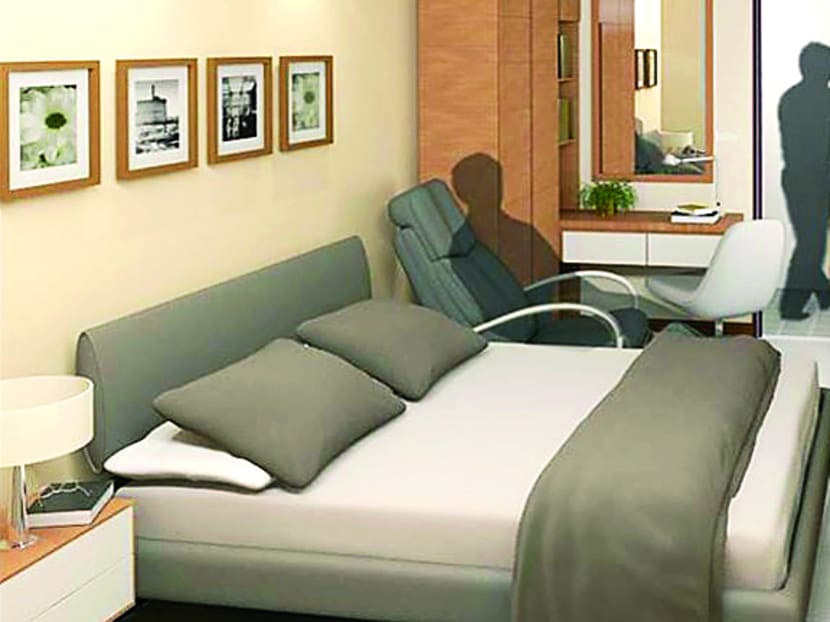More multi-generation families choosing to live together: Khaw
SINGAPORE — More multi-generation families are choosing to live together, as seen in the numbers applying for the newly-launched Three-Generation flats in the recent Build-To-Order (BTO) exercise in Yishun, said Minister for National Development Khaw Boon Wan yesterday.

An artist’s impression of a bedroom in HDB’s Three-Generation flat. The interest shown in these flats is in stark contrast to the ‘granny flats’ introduced previously that saw a low take-up rate. Illustration: HDB
SINGAPORE — More multi-generation families are choosing to live together, as seen in the numbers applying for the newly-launched Three-Generation flats in the recent Build-To-Order (BTO) exercise in Yishun, said Minister for National Development Khaw Boon Wan yesterday.
The units are a new type of flat to cater to multi-generation families living together and the interest shown is in stark contrast to the “granny flats” introduced in 1987 that saw a low take-up rate.
A third of the 1,152 applications received by the Housing and Development Board (HDB) were from multi-generation families. While in the past year, only 3 per cent of five-room flat applicants had applied under the Married Child Priority Scheme to live with, or near their parents.
Eighty-four such units, which were introduced during the September BTO, were grouped with 176 five-room units in the same development, so that applicants would have an alternative if all the units were taken up before their turn, said Mr Khaw in his blog entry yesterday.
The 115-square-metre flats, slightly larger than the current five-room flats, come with four bedrooms and two attached bathrooms.
Mr Khaw said second-timers also showed a strong interest in them. Two-thirds of 378 applications from extended families were from second-timers.
Among those who were applying for the first time, more than half were either expecting, or have children below the age of 16. The median age of first-timer applicants for these units was 39 — higher than previous five-room first-time buyers.
Mr Khaw said these families may be living with their parents currently and are looking forward to enjoying more space with a Three-Generation flat.
About 10 per cent of the first-time buyers had no children and a median age of 32. “I am happy they are planning ahead to move into a larger flat to better take care of their ageing parents and future children,” said Mr Khaw.
The minister noted that family care and support towards seniors will become increasingly important as Singapore’s population ages. “They also help to enrich family relations by sharing their experiences and lending an extra hand in caring for their grandchildren. We should continue to facilitate multi-generation living for Singaporeans who wish to do so,” he said.
The next BTO exercise, to be held this month, will include 100 Three-Generation units in Jurong West. Member of Parliament Lee Bee Wah, who chairs the Government Parliamentary Committee for National Development, said the increasing demand for such flats is a good sign, so that grandparents can help look after their grandchildren and children can take care of their parents.
Dr Lee has also asked the authorities to build more of these flats in Yishun as she sees that those residents who have been unsuccessful in applying for the first batch in Yishun are not likely to apply for flats in Jurong.






